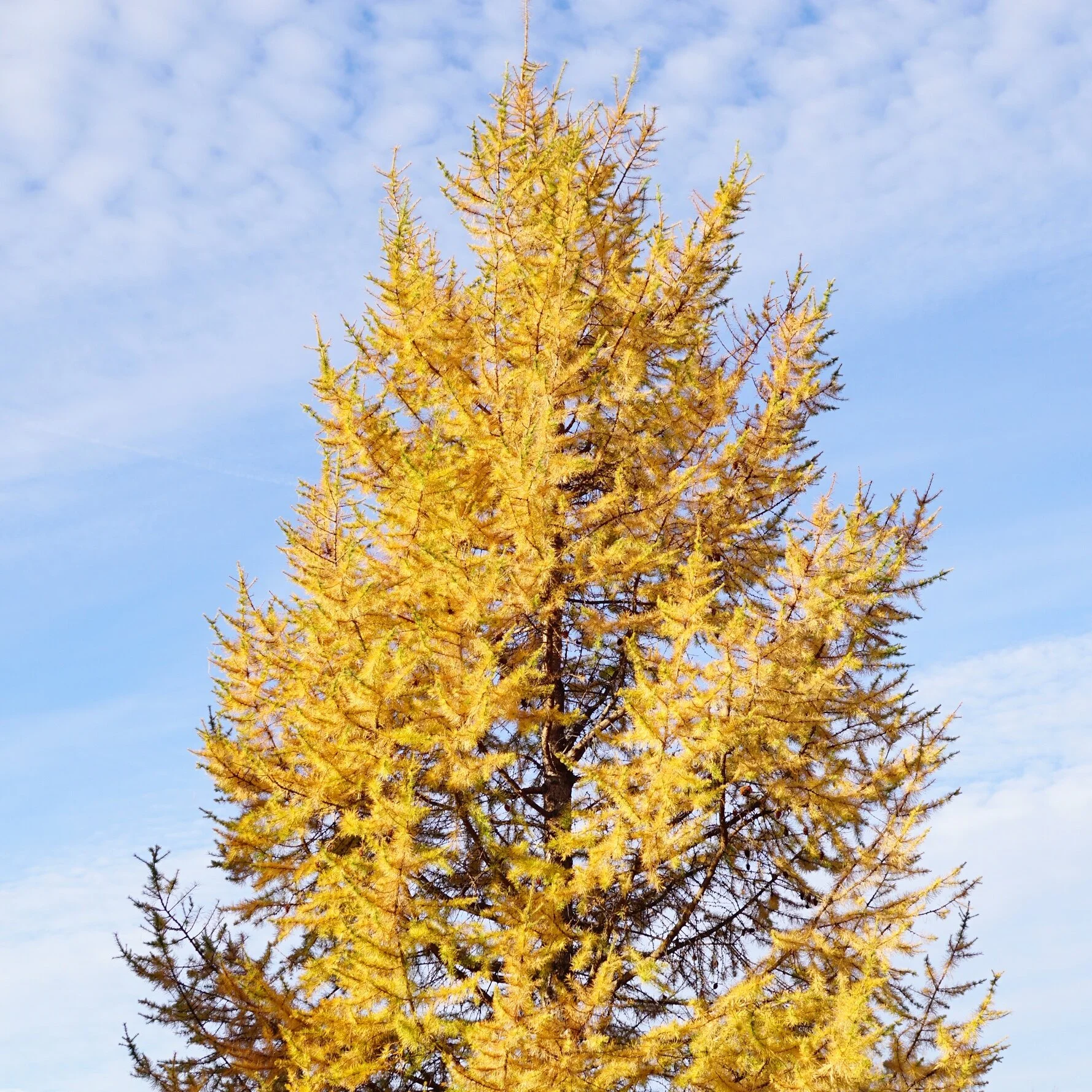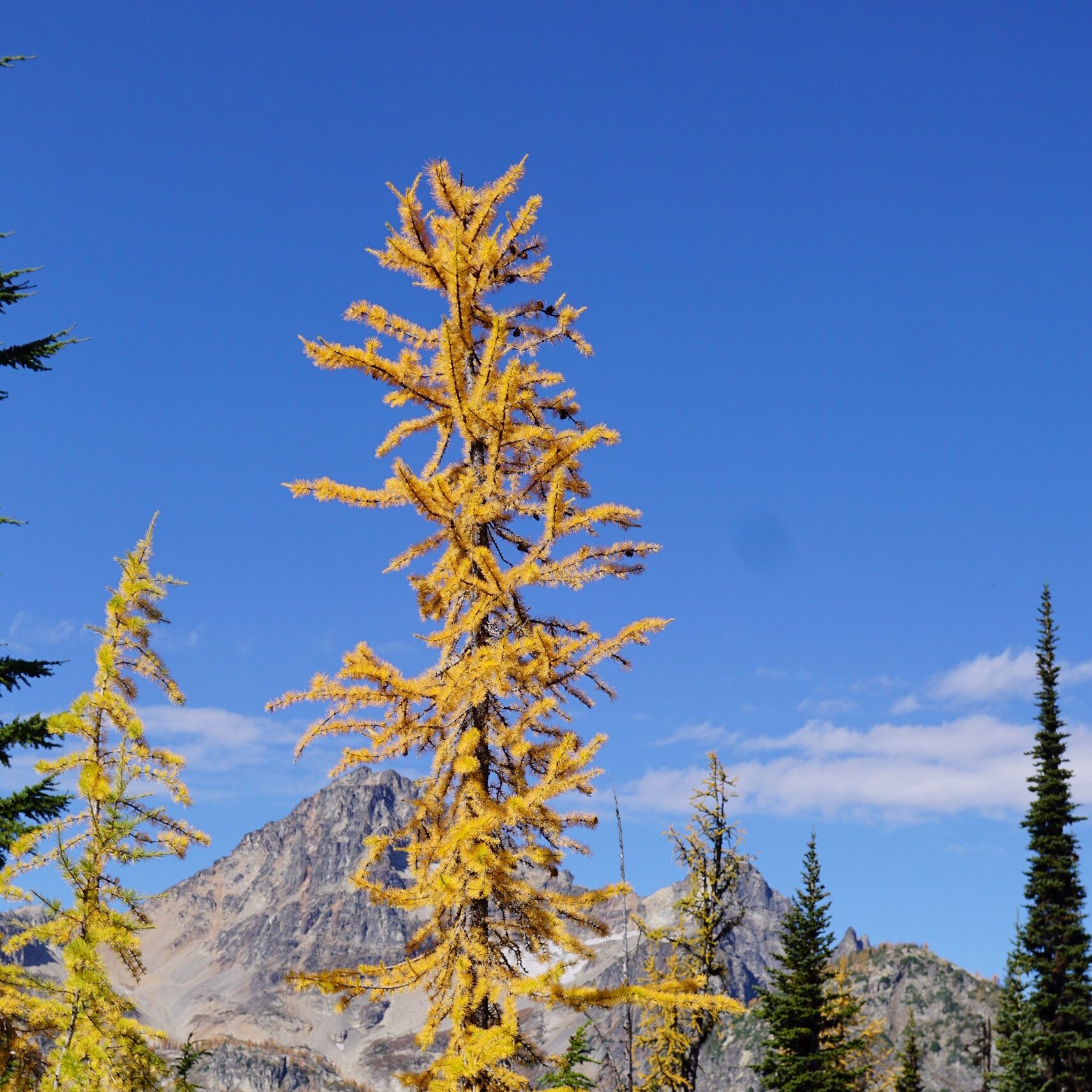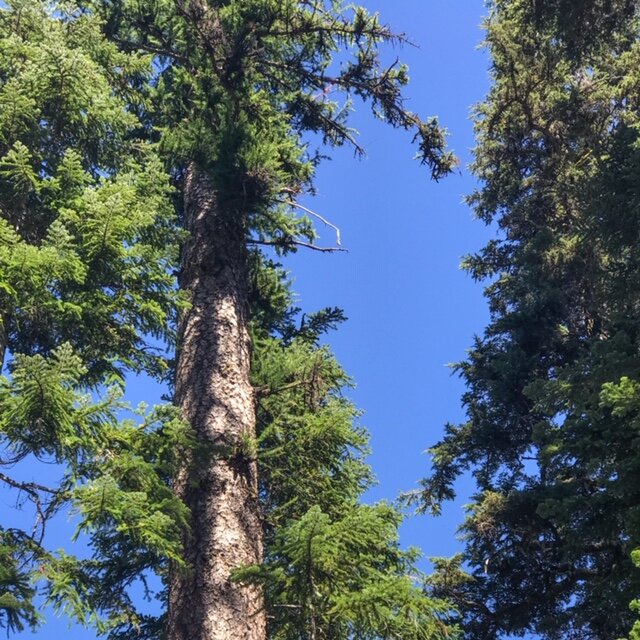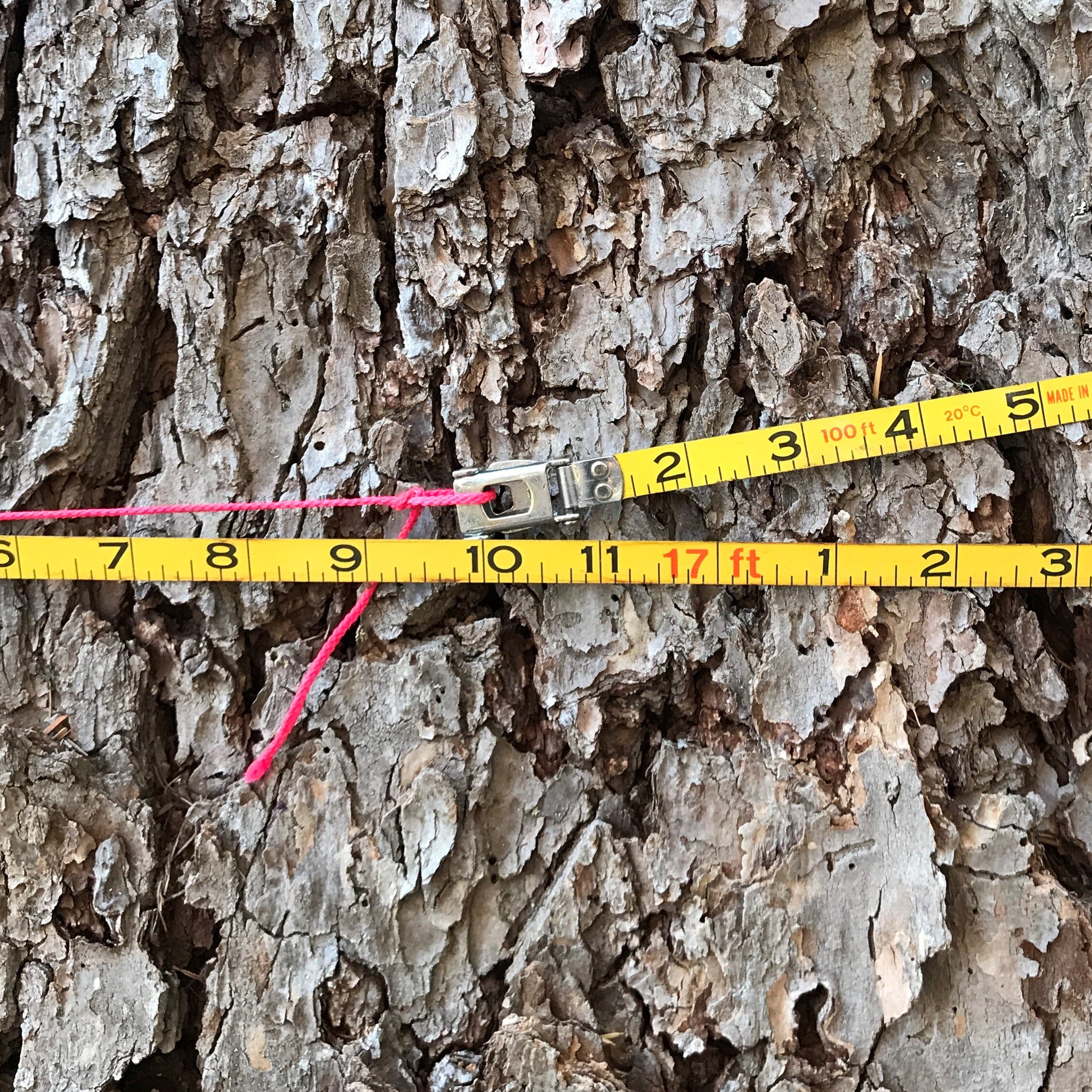Yesterday, I learned a new word: to larch, a verb. I think it means to go hiking in the fall to see golden-colored larches. The season is coming up soon. Do you plan to go larching? As a rule of thumb, Columbus Day or Indigenous Peoples’ Day is a good time to look.
What will you see?
Larches are deciduous. Their needles turn gold and drop off in the fall, like leaves of bigleaf maples and cottonwoods. Larches are the only conifers in the PNW that do this. In October, the gold stands out in striking contrast to the dark greens of other conifers.
There are three species of larches in North America, all with needles that turn gold in the fall:
western larch, Larix occidentalis, a large tree that lives at mid-elevation;
subalpine larch, Larix lyallii, a small tree that lives only at high elevation; and
tamarack, Larix laricina, a smallish tree that lives at low-to-mid elevations throughout the Great Lakes states, the New England states, across Canada, and Alaska, but not in the PNW except for the northeast corner of British Columbia.
Tamaracks were one of my favorite trees growing up in the Great Lakes area. Now, western larches and subalpine larches are among my favorite trees in the PNW.
Western larches are large, fast-growing trees that live east of the Cascade crest in Washington, Oregon, southern British Columbia; and more abundantly west of the continental divide in northern Idaho and western Montana. In Montana, people sometimes call these tree “tamaracks” instead of western larches; they are referring to the same trees and not the tamaracks of Canada and eastern U.S.
Subalpine larches are high-elevation cousins of western larches. They are our most cold-adapted tree species. Look for these hardy trees on ridges at 6,500’ elevation, especially on the north-facing side of the ridge. They live east of the Cascade crest in Washington and in the Rockies of Idaho, Montana, and southern British Columbia. They are not found in Oregon, as far as I know.
When you hike in the mountains, you might see western larches where you start the hike at mid-elevation and subalpine larches at your turnaround at high elevation. The two species do not mingle; they are separated by elevation.
For more on subalpine larches, click here
2. Why do larches turn yellow?
Like other deciduous trees, larches lose their leaves in the fall. In anticipation of the leaves falling off, chlorophyll—a green pigment that is responsible for photosynthesis—breaks down and gets absorbed into the tree. This makes it easier for the tree to re-synthesize chlorophyll in the spring. For more, click here.
In the fall, when the chlorophyll gets resorbed, other less-strong pigments show through. These are called carotenoids (among others), which are yellow. The yellow color is present in the needles all summer but, until fall, is overshadowed by green chlorophyll.
3. Why are larches deciduous?
Most conifers are evergreen because they live in climates where they can continue to photosynthesize all winter. Larches, although they are conifers, pursued a different evolutionary strategy: Larches drop their needles every fall to increase fire resistance. Here’s how it works:
a. Western larches require plenty of sunshine. They do poorly or die when shaded by other trees.
b. Periodic fires can eliminate competing trees, creating the environment that western larches like best … so long as western larches survive the fires.
c. Western larches have evolved several characteristics that make them the most fire-resistant conifer east of the Cascade crest:
Needles on western larches are always fairly new, or not more than 1/2-year old. Larch needles are plump with water compared to the several-year-old needles on other conifers.
Bark on western larches can be several inches thick. Other east-of-the-Cascade-crest conifers that have much thinner bark and are fire-susceptible include lodgepole pine, grand fir, and Engelmann spruce.
The crowns of western larches tend to be open or “see-through.” This helps prevent fires from spreading.
Roots of western larch are deeper than many other roots, which better enables them to survive heat.
After fires, it is not uncommon for large western larches to be the only trees alive.
4. Illustration of fire resistance
A few weeks ago, I was camping at 5,000’ in Washington next to a giant western larch. I measured it at 16’ 10” in circumference, or 5’ 4” in diameter! This is the largest larch I’ve seen and is no doubt many hundreds of years old. (Since then, I’ve read that the largest known western larch is 22’ around, in Montana, and is named “Gus.” For more on Gus, click here.)
The 5’+ western larch is standing among Pacific silver firs, mountain hemlocks, Engelmann spruces, and lodgepole pines that average only 1’ to 2’ in diameter. Why is there one big tree among many smaller ones?
Here’s the answer: This forest burns on a periodic basis, as forests do. The one giant larch managed to survive all fires since it first germinated, many hundreds of years ago. The trees around it succumbed to fires, leading to periodic replacement. It was this larch’s fire resistance that helped it survive.
I hope you see some of these spectacular trees when you go larching in October!




